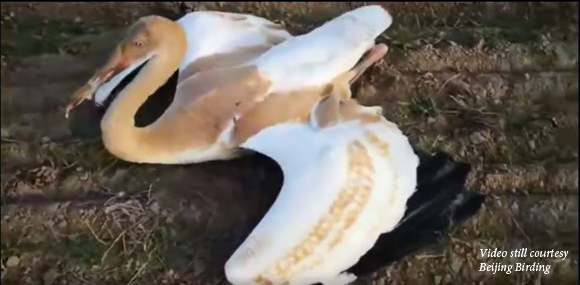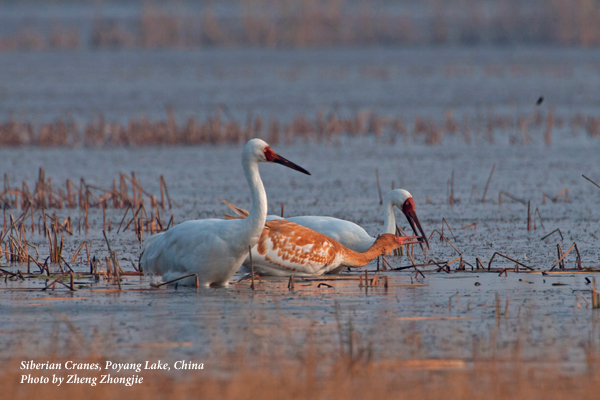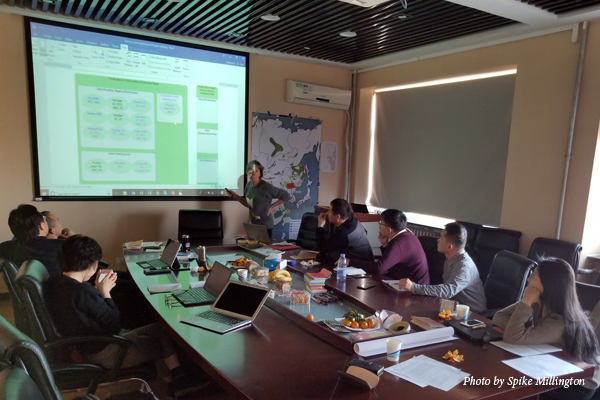
We’ve received updated information regarding the Siberian Cranes found earlier this winter poisoned near their staging area on the Yellow River delta in eastern China.
Professor Qian Fawen, executive deputy director of the National Bird Banding Center of China and secretary general of the United Crane Conservation Committee of China Wildlife Conservation Association contacted us Dec. 11 with new information.
He went to the Yellow River Delta on Dec. 1, just after the poisonings were discovered. Prof. Qian said eight birds were poisoned, including six Siberian Cranes and two Whooper Swans.
After treatment, Professor Qian said three of the six poisoned Siberian Cranes recovered, including the chick pictured above! These three cranes were banded and released back into the wild on Dec. 6.
“The place that the accident happened is a wheat field, just bordering the Yellow River Delta National Nature Reserve,” Qian explained. “Corn seeds with toxic chemicals were scattered by a poacher with intentions to poison geese that usually feed on the wheat field.” This incident continues to be investigated by local police.
Unfortunately, poisonings of these majestic Critically Endangered birds, as well as other species of cranes migrating through China, is not unique. Three Siberian Cranes were poisoned and also died at the Liao River in northeastern China in March 2016. Many poisoning incidents likely go unreported.
Poisoning can be unintentional, as in the case of farmers who treat corn seeds with toxic chemicals to prevent insect damage to their crops. Cranes also can be accidentally poisoned by poachers deliberately baiting geese and ducks for food or selling to restaurants in China.
Sadly, cranes also may be illegally targeted as exotic species for food and other uses, such as selling them as mounted specimens. In most cases, carbofuran, a highly toxic poison, implicated in the global decline of vultures and deaths of lions and other predators in Africa, is used for poisoning in China, where it remains widely available.

“Siberian Cranes are the most wetland-dependent of all cranes, feeding primarily on submerged tubers of aquatic plants in natural wetlands,” explained Spike Millington, Vice President International Programs and Director Asia Program. “However, in recent years, we have witnessed an increasing trend to feeding in non-natural habitats, such as agricultural lands where they are subject to significant risks from poisonings.”
Chinese government authorities are taking increasingly serious actions to counter poisoning and punish perpetrators, but have only limited personnel and capacity to monitor cranes in the agricultural areas outside of protected areas. As cranes increasingly feed in agricultural landscapes, they are subject to significant risks from poisonings.
How can you help? Please consider a gift to protect cranes like these injured Siberian Cranes from a variety of human-made threats, including poisonings and poaching. Click here to support our work.
We use your gifts to reduce poisoning in China and elsewhere, by working with government authorities and local partners to enhance our outreach and educational efforts, increase surveillance and rapid response to poisonings and support future policy efforts to control poisons and deter poisonings.

Our staff working in China met earlier this winter to address threats to cranes. Let’s work together, to make the bright future we envision for cranes and their habitats – thank you!
